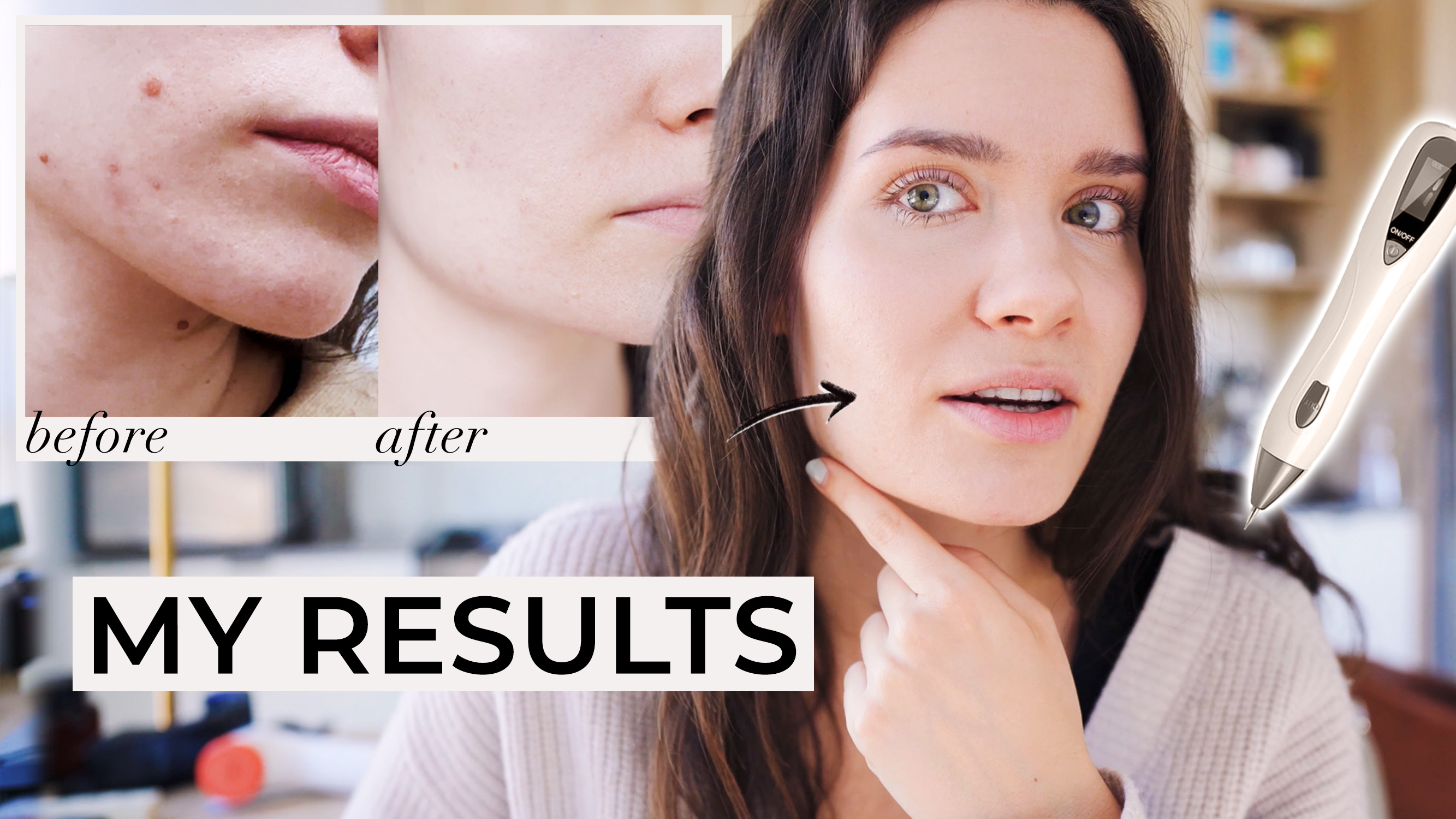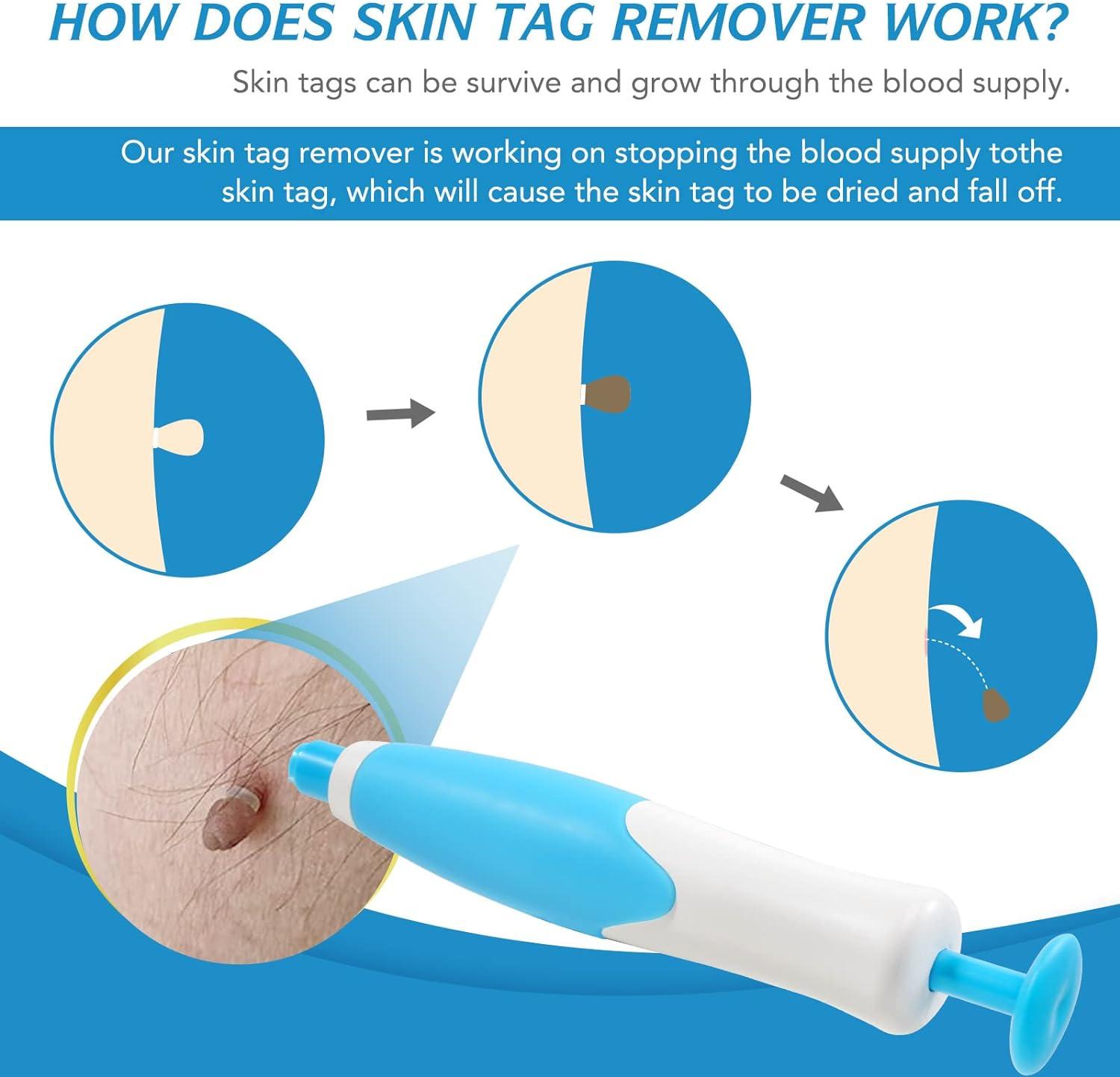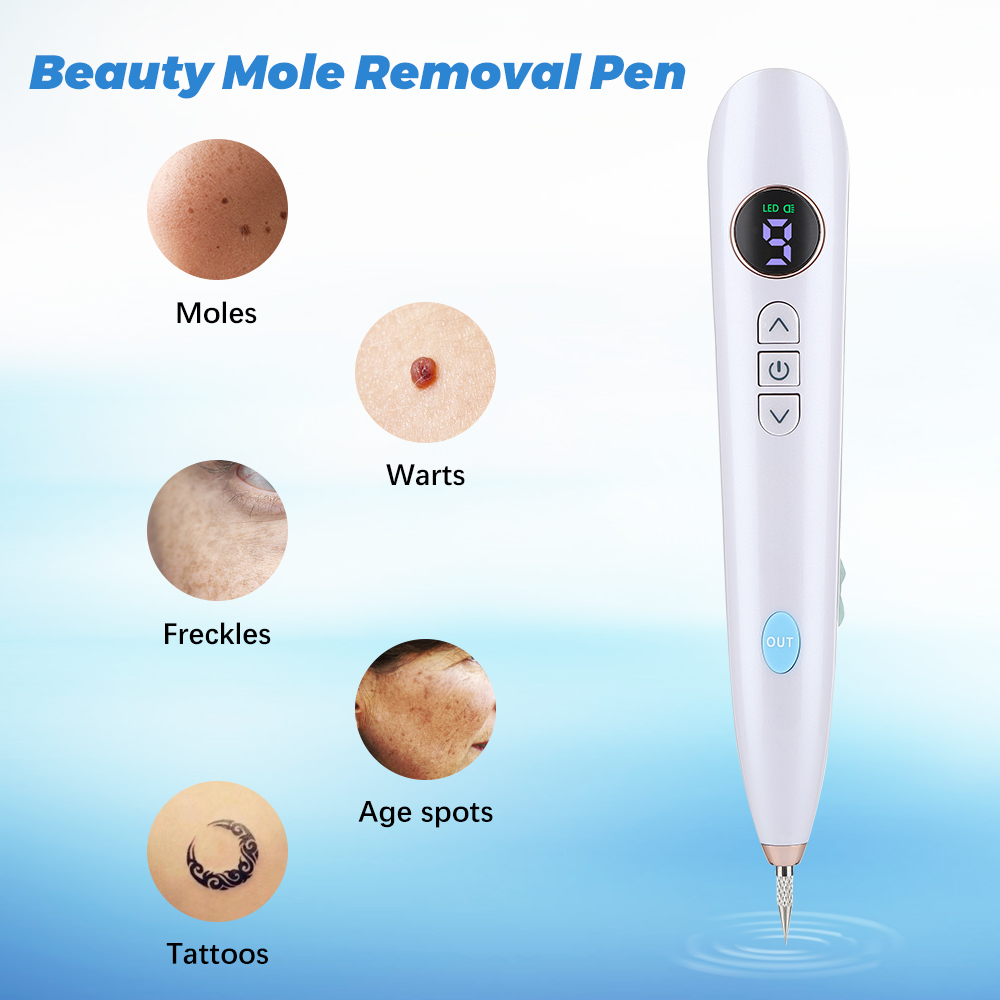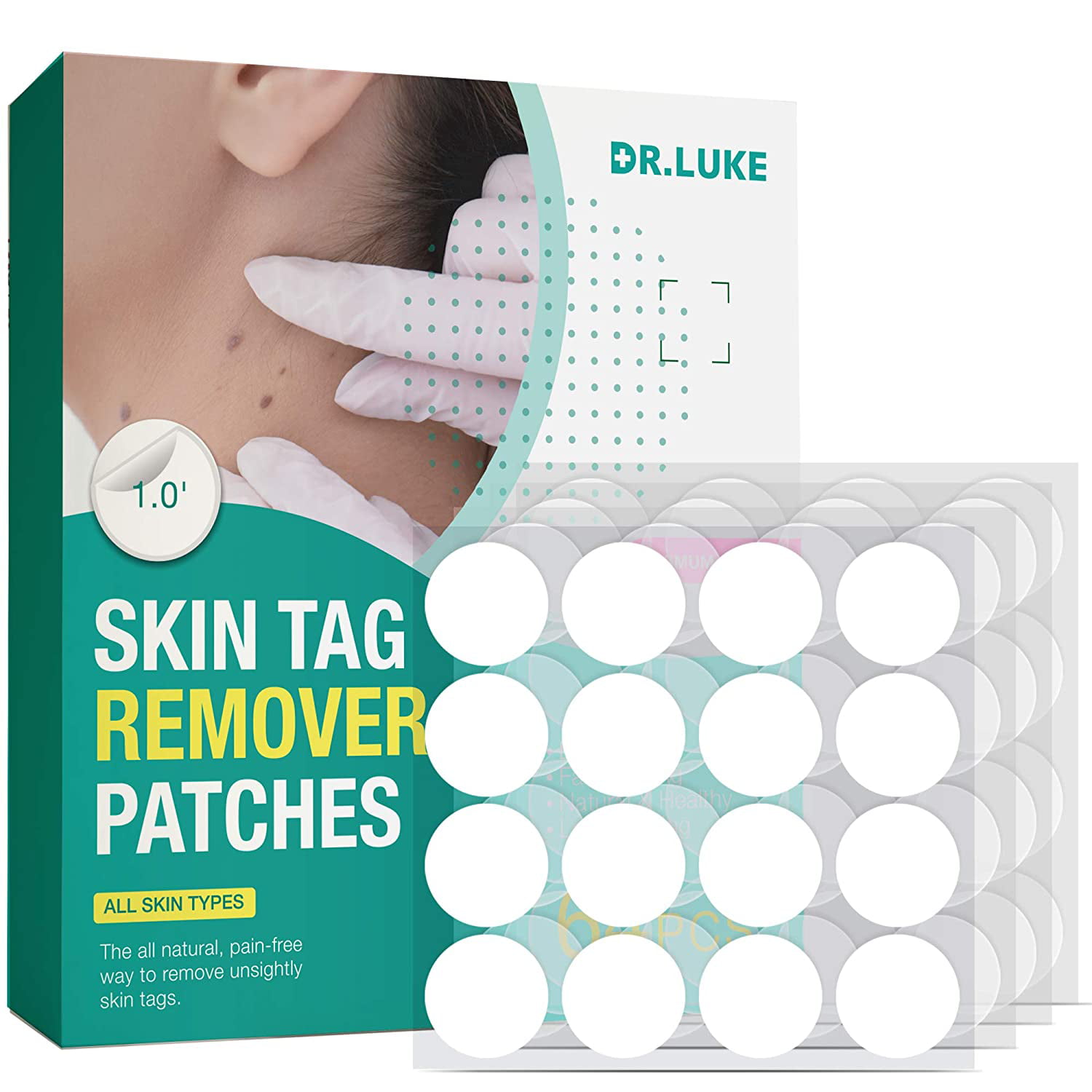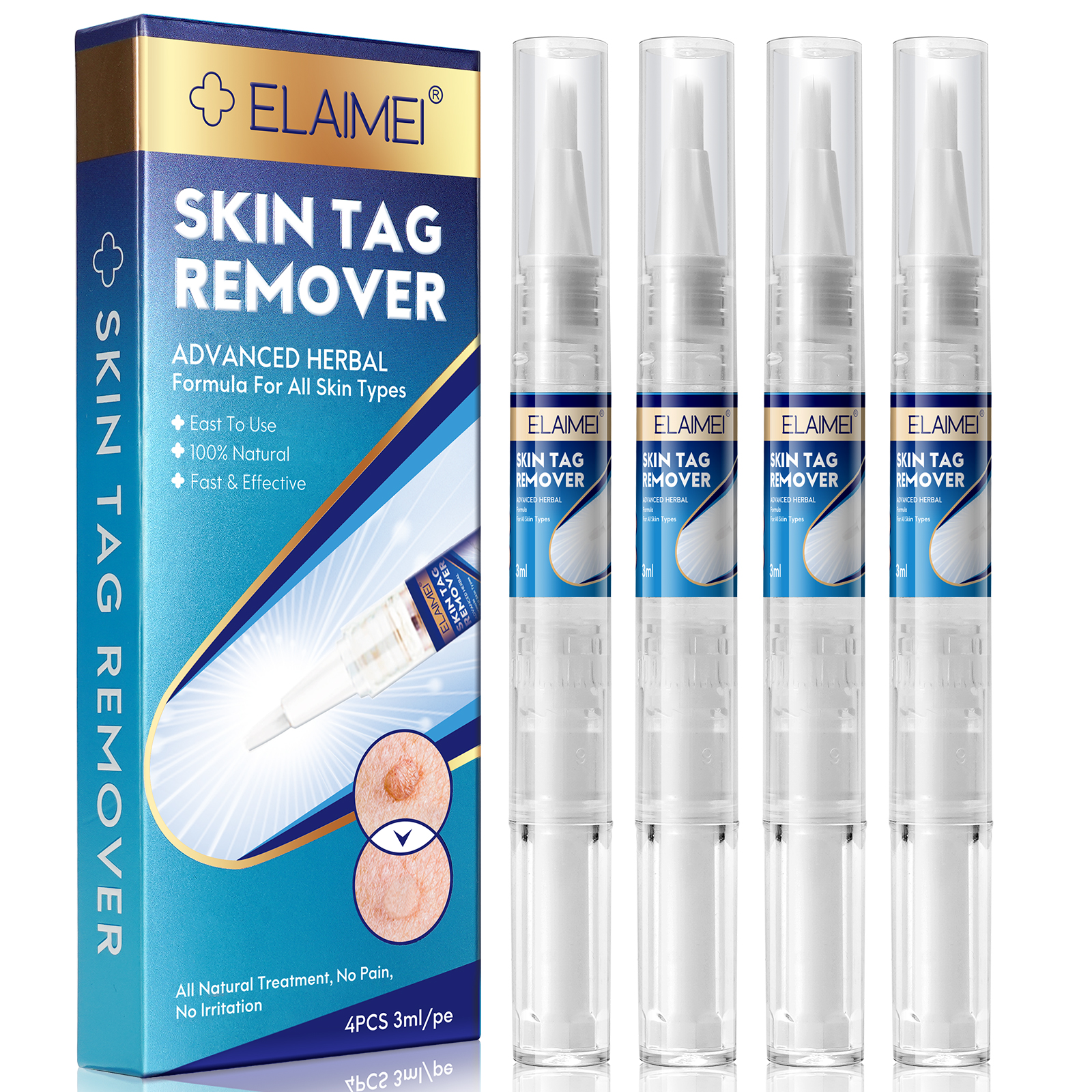Do Skin Tag Removal Pens Work

Imagine a warm summer day, the sun kissing your skin as you reach for your favorite sundress. Then, you feel it – that familiar little tag, rubbing against the fabric, a tiny annoyance on an otherwise perfect day. Skin tags, those small, benign growths, are incredibly common, affecting almost everyone at some point. But are the increasingly popular at-home removal pens truly a solution, or just another fleeting trend?
The burgeoning market for skin tag removal pens promises a quick and convenient solution to these bothersome blemishes. However, it's crucial to approach these devices with a healthy dose of skepticism and informed awareness. This article delves into the science behind these pens, examines their potential benefits and risks, and explores what dermatologists have to say about their efficacy and safety compared to professional treatments.
The Allure of DIY Solutions
In our fast-paced world, the appeal of a quick fix is undeniable. The beauty industry thrives on offering consumers easy, at-home solutions to common aesthetic concerns. Skin tag removal pens tap into this desire for convenience and affordability.
The promise is simple: a handheld device that delivers a controlled electrical current to cauterize or freeze the skin tag, causing it to eventually fall off. No doctor's appointment, no waiting room, and seemingly, no hassle.
What are Skin Tags Anyway?
Before considering removal methods, it's essential to understand what skin tags actually are. Also known as acrochordons, skin tags are small, soft, flesh-colored or slightly darker growths that typically hang off the skin. They are most commonly found in areas where skin rubs against skin, such as the neck, armpits, groin, and eyelids.
Dr. Emily Carter, a board-certified dermatologist, explains, "Skin tags are generally harmless and don't usually cause any symptoms unless they are irritated by clothing or jewelry. They are often associated with insulin resistance, obesity, and genetics."
While benign, skin tags can be a cosmetic concern for many. This drives the desire for effective and accessible removal options.
How Skin Tag Removal Pens Claim to Work
Most skin tag removal pens on the market employ a technique called electrocautery or cryotherapy. Electrocautery uses heat to burn off the skin tag, while cryotherapy uses extreme cold to freeze and destroy the tissue.
The pens are designed to deliver a localized burst of energy to the skin tag, theoretically causing it to dry up and eventually fall off. Many come with adjustable settings to control the intensity of the treatment.
The marketing often emphasizes ease of use and minimal downtime, painting a picture of a simple, pain-free process. But is this reality?
The Potential Pitfalls: Risks and Concerns
While the idea of a DIY skin tag removal solution is tempting, there are several potential risks associated with using these pens at home. The primary concern is the potential for improper use, leading to burns, scarring, and infection.
"Without proper training and technique, it's easy to damage the surrounding skin, resulting in permanent scarring," warns Dr. Carter. She emphasizes the importance of understanding skin anatomy and the risks of using unregulated devices.
Another concern is the risk of misdiagnosis. What appears to be a skin tag could actually be something more serious, such as a mole or even a skin cancer. Attempting to remove it yourself without a proper diagnosis could delay necessary medical treatment.
Additionally, the hygiene of these devices can be questionable. If not properly sterilized, they can introduce bacteria and lead to infections. The lack of regulation in the market also means that the quality and safety of these pens can vary widely.
What the Experts Say: Dermatologist's Perspective
Dermatologists generally advise caution when considering at-home skin tag removal methods. They emphasize the importance of seeking professional evaluation and treatment for any skin growths.
"In my practice, I've seen patients who have tried these at-home methods and ended up with significant complications, including scarring, infection, and incomplete removal," says Dr. Carter. "Professional removal methods, such as surgical excision, cryotherapy, or electrocautery performed by a trained dermatologist, are generally safer and more effective."
Furthermore, a dermatologist can properly diagnose the growth to ensure it is indeed a skin tag and not something more concerning. They can also perform the removal in a sterile environment, minimizing the risk of infection.
Professional Removal Options: Safe and Effective Alternatives
Several safe and effective professional removal options are available for skin tags. These include surgical excision, where the skin tag is cut off with a scalpel; cryotherapy, where liquid nitrogen is used to freeze the skin tag; and electrocautery, where a heated probe is used to burn off the skin tag.
These procedures are typically quick, relatively painless, and performed in a dermatologist's office. They offer a higher degree of precision and control, minimizing the risk of scarring and other complications.
Surgical excision often involves a small stitch, while cryotherapy and electrocautery usually result in a small scab that heals within a week or two. The cost of professional removal varies depending on the method used and the number of skin tags being removed, but it is often comparable to the cost of purchasing multiple at-home removal pens.
Navigating the Market: Tips for Informed Decision-Making
If you are considering using a skin tag removal pen, it's crucial to do your research and weigh the potential risks and benefits carefully. Look for devices that have been tested and certified by reputable organizations. Read reviews from other users, but take them with a grain of salt, as experiences can vary widely.
Never attempt to remove a skin tag that is bleeding, inflamed, or changing in appearance. Consult a dermatologist immediately if you notice any of these signs.
Most importantly, prioritize your health and safety. If you have any doubts or concerns, err on the side of caution and seek professional medical advice.
The Bottom Line: Proceed with Caution
While skin tag removal pens may seem like a convenient and affordable solution, they come with potential risks that should not be ignored. The lack of regulation, the potential for improper use, and the risk of misdiagnosis are all valid concerns.
The most effective and safest approach to skin tag removal is to consult with a board-certified dermatologist. They can accurately diagnose the growth, recommend the best removal method for your individual needs, and perform the procedure in a safe and sterile environment.
Ultimately, your skin health is worth investing in. Choose the path that prioritizes safety and expertise, ensuring a smooth and worry-free experience.


